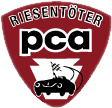02-14-2010, 11:30 AM
One of the things I have been focusing on is braking at a consistent, optimal point at each turn, but particularly at the end of fast approaches. (Bless you, Porterfields.) Let's assume that we're nearing the end of a long straightaway with some sort of clearly defined braking markers, e.g., fixed posted signs for "4," "3," "2" and "1." (I'll try not to digress about turning cones -- don't ask me what I generally think about those driving crutches, the DE equivalents of painting by the numbers.)
So let's say the tires and and pads are up to temperature, and you decide that this lap you want to initiate braking "at" the "3" sign. What does that really mean, in practice? You're flying down at 100+ MPH, right hand turn fast approaching; not the time to turn your head 90 degrees to the left to check when the braking marker is directly alongside. Never turn your head the slightest bit, and use peripheral vision? Best estimate, using peripheral vision, as marker disappears past left pillar, while all the time concentrating on the road ahead?
Thanks,
Larry
So let's say the tires and and pads are up to temperature, and you decide that this lap you want to initiate braking "at" the "3" sign. What does that really mean, in practice? You're flying down at 100+ MPH, right hand turn fast approaching; not the time to turn your head 90 degrees to the left to check when the braking marker is directly alongside. Never turn your head the slightest bit, and use peripheral vision? Best estimate, using peripheral vision, as marker disappears past left pillar, while all the time concentrating on the road ahead?
Thanks,
Larry
'95 993


 Driver's Education
Driver's Education Club Racing
Club Racing
 Member List
Member List RSS
RSS Help
Help




